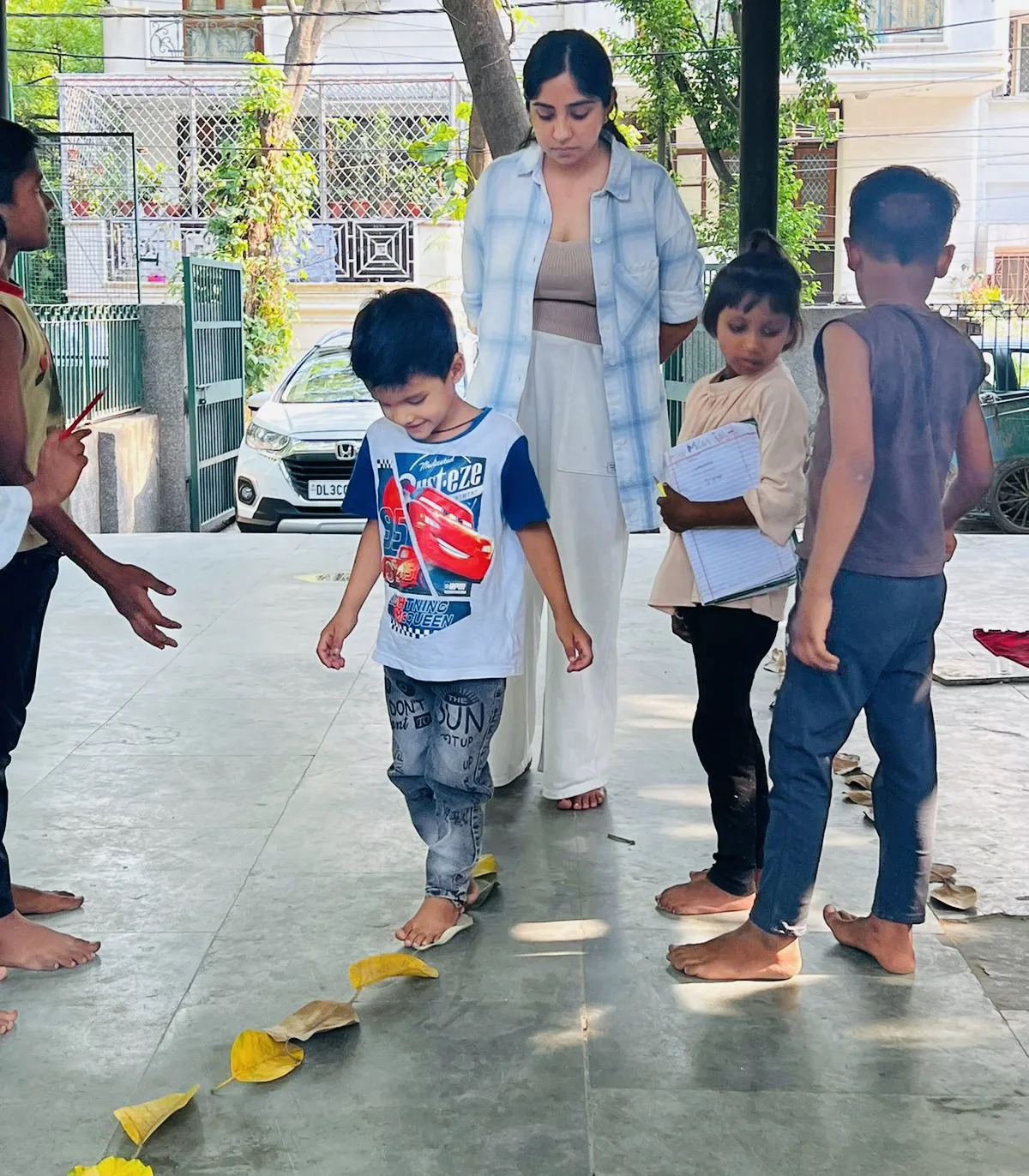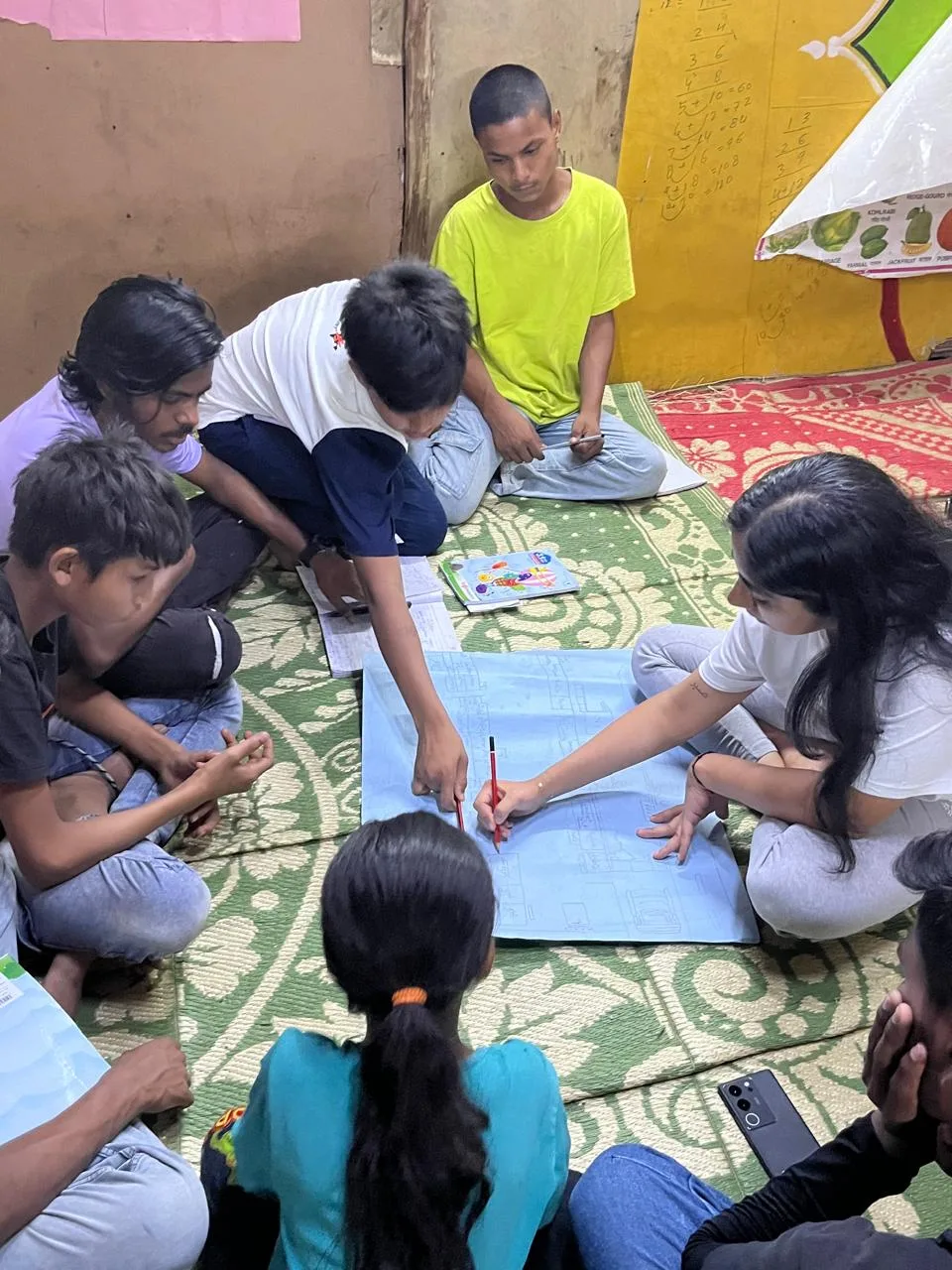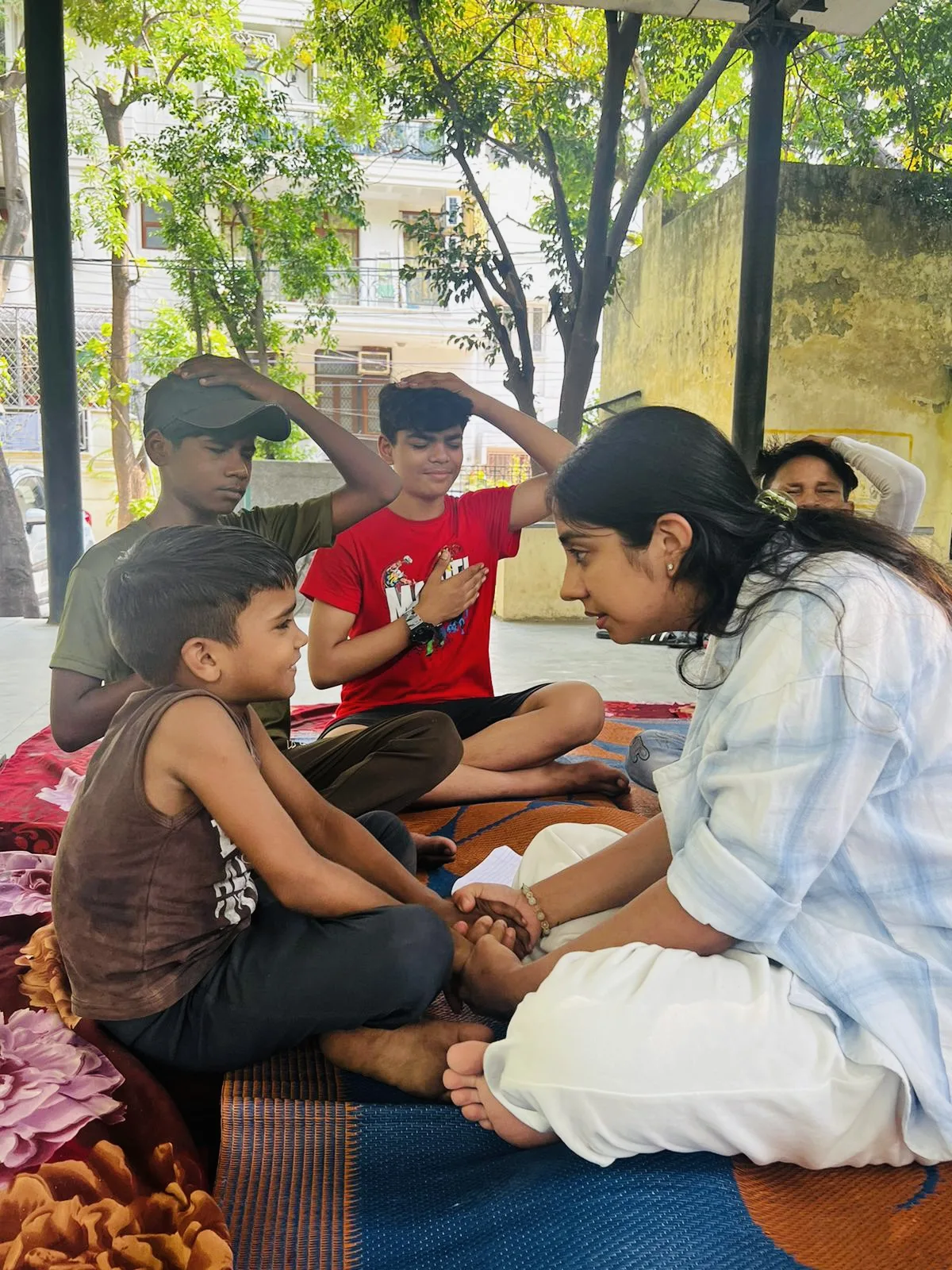Welcome to our exclusive interview series, Young Professionals in Heritage, where we delve into the vibrant world of young heritage professionals. This series shines a spotlight on the dynamic individuals who are shaping the future of the heritage sector.
Our guest this week is Chandni Thadani. Chandni is an urban planner and founder of IKHAT foundation. She is an advocate of nature and heritage. Her foundation works towards creating employment opportunities for underprivileged youth through heritage interpretation and conservation.
Heritage is alive in the stories we tell, the traditions we uphold, and the communities we cherish.
Let’s start with simple questions – How did the concept of IKHAT come into being? Tell us a bit about IKHAT’s approach to connecting well-being and heritage.
The journey of IKHAT began as a profound personal transformation in my life. About two and a half years ago, I faced severe mental health challenges that left me feeling lost, without direction or purpose. It was during this period of introspection that my mother, who is deeply involved with NGOs, pointed me towards teaching children at one such organization.
Her words resonated deeply with me, “Contribute your knowledge and give back to society. Recognize your privilege in accessing resources for mental health while many struggle without even basic necessities like shelter.” These words sparked a fire within me. A desire to create something meaningful and impactful of my own.
Teaching at the NGO was a revelation. Connecting with the children on a personal level, I realized the power of education not just as a tool for knowledge but as a pathway to empowerment. It was here that the idea of IKHAT began to take shape—a platform where heritage and well-being intersect to create meaningful change.
Starting IKHAT wasn’t easy. Balancing the demands of a new venture while preparing for a significant relocation tested my resilience. There were challenges along the way, such as setbacks with fundraisers withdrawing support, but I remained steadfast in my commitment to educate and empower children from diverse backgrounds.
One pivotal moment in my journey was discovering the profound impact of heritage on life skills and well-being. My architectural research, after my graduation led me to uncover the sustainable lifestyle of the Baul singers in Kenduli village in West Bengal. Their communal living and ancient practices fascinated me deeply. As I delved deeper into their world, I realized the transformative potential of heritage in addressing contemporary mental health challenges. As I reflect on this journey, I am reminded of a quote that has guided me, “Heritage isn’t just about the past; it’s a dynamic force that can enrich our present and guide our future.”
The Baul singers embody resilience and emotional well-being through their traditions. This insight became the foundation of IKHAT’s mission—to document and promote heritage-based interventions that enhance societal well-being.
For me, IKHAT is not just a project; it’s a personal quest to preserve and celebrate our cultural legacies. It’s about turning adversity into empowerment and finding purpose in connecting people with their roots. Through interactive learning and community engagement, IKHAT aims to foster pride and belonging, contributing to overall happiness and fulfilment.
Heritage is alive in the stories we tell, the traditions we uphold, and the communities we cherish.
IKHAT is my journey of self-discovery intertwined with a mission to harness the transformative power of heritage for the well-being of all, especially the underprivileged who lack access to even basic education.
IKHAT is a non-profit foundation and you engage with people from the higher strata of the society for fundraising. Then the money is directed towards the children and youth of the lower strata. How is the perception and understanding of heritage different in both cases?
We navigate a delicate balance between engaging with the higher strata for fundraising and channelling those resources towards the children and youth of the lower strata. The perception and understanding of heritage differ markedly between these groups, reflecting their unique experiences and perspectives.
For those in the higher strata of society, heritage is often viewed in isolation or as monumental in nature. Heritage, for them, tends to be something to be observed and appreciated from a distance, often involving visits to historical sites and monuments. This perspective is shaped by their education and access to resources, allowing them to engage with heritage in a more academic or recreational manner. They have the privilege to critically analyze and interpret historical and cultural narratives, which can sometimes lead to viewing heritage as a separate entity from their daily lives.
In contrast, for the generation belonging to the lower strata, heritage is not a distant concept but an integral part of their daily existence. Their unawareness of formal heritage education brings about maximum awareness as they live and breathe traditional practices every day. These individuals embody living traditional heritage, practising age-old customs and traditions that have been passed down through generations. Their lives are deeply intertwined with these practices, not as a matter of concern for protection, but as skills to attain and a lifestyle to adapt.
The lower strata often live in conditions that have not been significantly altered by modern development norms. Their unique and receptive perceptions of heritage stem from an organic continuation of traditions, making them rare followers of customs that many have abandoned. Despite living in challenging environments, it is these customs that bring them together, influencing their social interactions and even their built environment. The simplicity and authenticity of their practices offer profound insights into our cultural roots.
People from the higher strata have the knowledge set to critically view our historical cultural beliefs. Their engagement with heritage is often intellectual and research-driven, providing valuable perspectives and funding necessary for conservation efforts. However, the people from the lower strata find meaning and purpose in their lives through these age-old traditions. They are the custodians of intangible heritage, offering a living testimony to practices that might otherwise fade into obscurity. Their lived experiences become a matter of research and inspiration for many history professionals like us.
We strive to bridge these differing perceptions by fostering a mutual understanding and appreciation of heritage across social strata. Heritage conservation is not just about preserving the past but about recognizing and valuing the diverse ways in which it is experienced and lived. By directing funds from the higher strata towards empowering the lower strata, we aim to create a symbiotic relationship where each group learns from and supports the other.
In essence, heritage is a living force that connects us all, transcending social and economic boundaries. We endeavour to create a world where heritage is not just a luxury for the few but a shared legacy that enriches the lives of everyone, fostering pride, belonging, and a deeper understanding of our collective identity.
Built heritage has always been a priority in India. Many heritage advocacy campaigns also solely focus on it. However, IKHAT believes in engaging with the outside. The pupils at IKHAT spend a lot of time in nature. Has this experience helped them realise the value of natural heritage? Do you plan to conduct workshops to create awareness about natural heritage?
Absolutely! IKHAT extends its focus beyond built heritage, emphasizing the profound value of natural heritage. By engaging with nature, we replicate the older traditions of imparting knowledge as followed in the ancient Hindu system, where learning was closely integrated with the natural environment. This approach makes old pedagogical ways practical, creating a similar setup for our students and fostering a deep appreciation for the natural world.
We believe that heritage is not just about preserving monuments and buildings; it encompasses the natural environment that surrounds us. Our semi-open setup, surrounded by nature, is one of our core principles—learning from nature. This immersive experience allows children to connect with their surroundings, fostering a sense of responsibility and appreciation for the natural heritage that sustains us.
Spending time in nature has profoundly impacted our pupils. Nature acts as a healing force, helping them realize the intrinsic value of natural heritage. It provides a safe space for introspection, emotional healing, and personal growth, which is crucial for children from underprivileged families who often face significant mental health challenges. These children frequently struggle to express themselves, experiencing physical abuse or becoming targets of frustration within their families. Substance abuse and alcoholism among parents further compound these issues.
To address these challenges, we emphasize the importance of connecting with one’s soul, mind, and heart. Our approach prioritizes holistic education and personal development over rigid academic methods, focusing on understanding each child’s unique needs and addressing them accordingly. By fostering a connection with nature, we help children heal and grow, recognizing their role in preserving our natural heritage.
In line with our mission, we plan to conduct workshops to create awareness about natural heritage. These workshops will be designed to educate children about the importance of nature conservation, sustainable living, and the interdependence between humans and the natural world. By engaging with nature hands-on, children learn to appreciate its beauty, understand its significance, and develop a sense of stewardship towards the environment.
IKHAT stands apart from traditional schools by integrating natural heritage into our educational framework. We invite everyone to join us on this journey of empowering vulnerable children, promoting heritage education, and fostering holistic well-being. Together, we can create a brighter future for these children, equipping them with the skills and support they need to thrive in life.

Memory collection projects are simple but effective ways to document local heritage. One of IKHAT’s projects is memory collection and documentation of neighbourhoods wherein, youth living in the slums are engaged in the memory collection of the slum. How has this project fostered a sense of belonging in them? Has it helped them discover their individual or collective identities?
Our memory collection and documentation project has had a transformative impact on the youth living in the slums, fostering a profound sense of belonging and helping them discover their individual and collective identities. This project was initiated to practically impart the knowledge of documenting intangible heritage, making the process more meaningful by involving the residents of slums who already live in a community-centric environment.
The ‘togetherness’ factor in slum communities is a powerful binding force, driven by their shared economic conditions. By documenting their stories and collecting memories from each household, the youth are able to see themselves through the lens of heritage, which in turn helps them attain a stronger sense of identity. The project highlights the importance of their everyday lives, struggles, and histories, which are often overlooked or forgotten.
Common stories and struggles—whether related to their occupations or the histories of how they found a place to reside—become historical narratives that deserve recognition. By creatively documenting these narratives, the youth gain a new perspective on their own lives and their community. This process not only preserves their stories but also enhances their pride in their heritage.
Engaging youth in creative storytelling and cultural mapping has provided them with innovative ways to document their environment, offering a new perspective on the slums. This has been particularly important in countering the negative perceptions often associated with slum dwellings. Urban development norms typically view slums as areas to be demolished, but through our project, the narratives of the dwellers are preserved and given the importance they deserve.
The history of today would be incomplete without knowing the lifestyle and struggles of this population before knowing the history of a magnificent building that would come up on the same piece of land after demolishing a slum. This project underscores the idea that history should reflect the experiences of the masses, not just political advancements or monumental structures. By documenting the lives of those living in slums, we ensure that their contributions to our cultural fabric are acknowledged and preserved.
Through workshops and training sessions, community engagement programs, and awareness campaigns, the project has empowered youth with a deeper understanding of their heritage. These activities have also strengthened their value system, fostering a sense of pride and belonging. By participating in heritage mapping exercises, the youth have developed visual and digital tools to showcase their community’s unique cultural assets, further reinforcing their connection to their heritage.
IKHAT’s project has empowered youth, instilled a strong value system, and fostered a deeper connection with their community. The memory collection project has not only helped them discover their individual identities but also reinforced their collective identity as a community with a rich cultural heritage. This sense of belonging and pride in their heritage is crucial for their overall well-being and personal development.

You train underprivileged teenagers to make a small living from becoming tour guides for heritage walks, essentially using heritage to combat unemployment or at the very least help their family with some additional income. How do you train these teenagers? Is there a language or educational barrier that you need to overcome when teaching them to interpret heritage?
We are training underprivileged teenagers to become heritage walk leaders is a deeply personal and transformative journey. This initiative aims to provide not just a means of income, but also a sense of pride and connection to their cultural roots.
Our training approach is hands-on and compassionate. We start with interactive workshops that cover local history and cultural practices. Recognizing that many of these teenagers have limited formal education, we use simple language, storytelling, and visual aids to make learning engaging and accessible.
Language can be a significant barrier, so we provide training in both the local language and basic English, focusing on conversational skills relevant to guiding tours. This dual-language approach helps them communicate effectively with both local and international visitors. Practical exercises and role-playing build their confidence in speaking.
Teaching interpretive skills allows them to narrate heritage stories compellingly. This includes public speaking, storytelling techniques, and body language. We emphasize making the tours interactive and engaging, encouraging questions and discussions. Hands-on practice is essential, so we organize mock heritage walks where teenagers guide under the supervision of experienced mentors. This real-world training helps them apply their knowledge, build confidence, and refine their guiding skills.
Cultural sensitivity and ethics are crucial, and we stress the importance of presenting heritage respectfully and accurately. This includes respecting different beliefs and ensuring the information shared is factual and balanced.
To overcome language barriers, we start with basic English and encourage the use of local languages. This dual-language strategy ensures they can reach a wider audience while staying authentic. By simplifying complex concepts and focusing on practical knowledge, we bridge educational gaps. Visual aids and storytelling make learning more relatable and less intimidating.
Training these teenagers as heritage walk leaders provides them with a means to support their families and boost their self-esteem and community standing. This initiative transforms heritage into a livelihood opportunity, fostering economic independence and cultural pride. Through this program, we aim to create young leaders who are knowledgeable, confident, and capable of making a positive impact on their communities.


